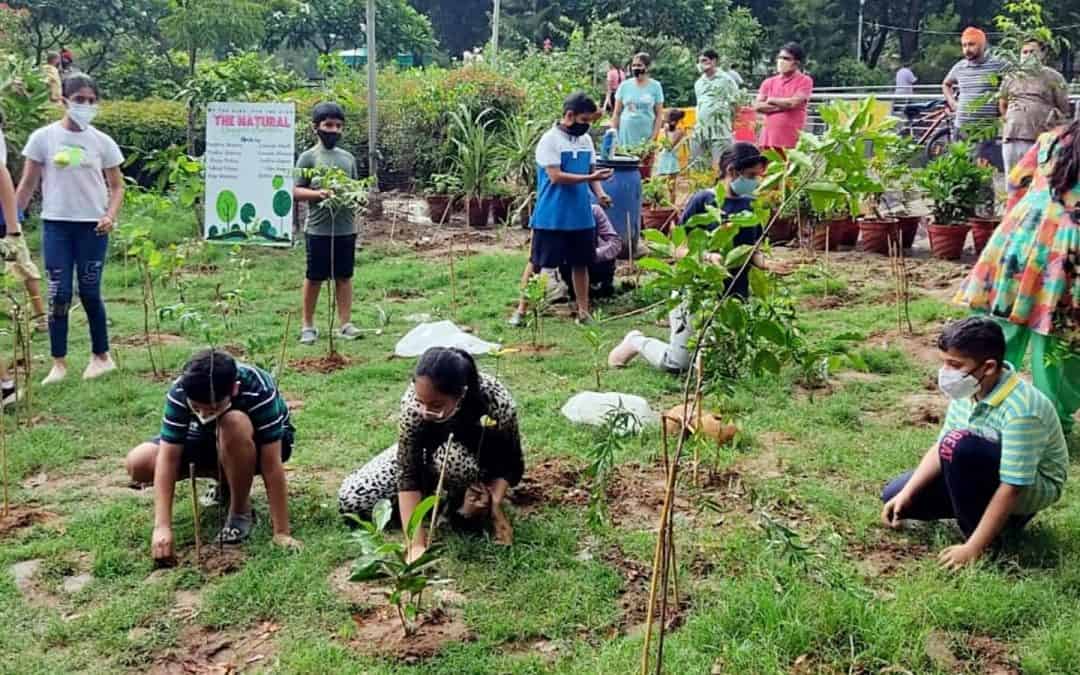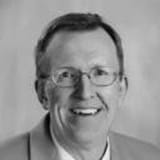By William H. Benson
The Parallel Lives
Of The NOBLE AMERICAN RELIGIOUS THINKERS AND BELIEVERS:
Roger Williams VS. Cotton Mathers
NEW ARTICLES

Fruits
Fruits
In 1905, the USDA published a bulletin: Nomenclature of the Apple: A Catalog, that listed 17,000 names. After removing the duplicate names, it still listed 14,000 different varieties of the apple.
Between Captain John Smith in Jamestown, Virginia, in 1607, and the beginning of the 20th century, American settlers planted thousands of fruit trees, and produced thousands of varieties. Horticulturists now consider those three centuries the Golden Age of pomology, the science of fruit-bearing trees.
The most famous of the early planters was John Chapman, aka Johnny Appleseed. “By the 1830’s, he owned a string of apple-tree nurseries across Pennsylvania, Ohio, and Indiana.”
Most fruit that we eat comes from trees first cultivated in Europe and Asia, and carried to America.
As for native American fruit trees, they include: the Juneberry, the Red Mulberry, persimmon, may haw, wild cherry, and pawpaw. Also, the few plum and crabapple trees native to America produce a tart fruit, good only for making preserves.
Sixty years before the USDA published its bulletin, a young and enthusiastic pomologist named Andrew Jackson Downing wrote a most interesting book, first published in 1847, The Fruits and Fruit Trees of America: The Culture, Propagation, and Management.
An enthusiastic lover of fruit trees, Downing is almost lyrical when he writes: “It is the most perfect union of the useful and the beautiful that the earth knows: trees full of soft foliage; blossoms fresh with spring beauty; and fruit, rich, bloom-dusted, melting, and luscious.”
“I heartily desire that every man should cultivate an orchard, or at least a tree of good fruit.”
Downing points out that each generation of living men and women possess fruit trees because of the countless hours of work that previous generations undertook and completed. For decades, they each tested by trial and error, and then grafted, cultivated, and pruned their fruit trees.
He then declares that there are two tendencies within every fruit tree, “a tendency to improve, but a stronger tendency to return to a natural or wild state.” It is men and women’s duty to fight off a fruit tree’s tendency to return to that wild, more primitive, albeit natural state.
He writes, “If the arts of cultivation were abandoned for only a few years, all the annual varieties in our gardens would disappear and be replaced by a few original wild forms,” and, “In the midst of thorns and sloes, Man the Gardener arises and forces nature to yield to his art.”
Downing connects “culture” back to its original meaning, “a piece of tilled land, or to cultivate,” before it became known as “intellectual training and refinement.” Indeed, the word “culture” has its roots in agriculture and arboriculture, “the grafting and pruning and training,” of human beings.
A current-day biographer of Ralph Waldo Emerson, Robert D. Richardson, Jr., said of Downing’s book, that “it is proof that one person can change things. No orchard keeper can be a believer in fate.”
Ralph Waldo Emerson—writer, thinker, essayist, and poet extraordinaire—read Downing’s book when first published, and took to heart Downing’s call to plant fruit trees. He first planted grape vines, and then over a hundred trees in the acres beside his house in Concord, Massachusetts.
He planted thirty apple trees, a dozen quince trees, plus plenty of plum, peach, and pear trees.
Richardson says that Emerson’s trees died long ago, and that today most of those acres, “have run wild. Only a few steps from the house the land is densely overgrown, abandoned, and impenetrable.”
That stronger tendency to return to a natural or wild state superseded that weaker tendency to improve. At least that is what happened on Emerson’s soil.
For those who like to catch and digest trivia, Concord grapes were named after Emerson’s town, but not due to Emerson’s efforts, but due to Ephraim Bull’s, the town’s fire chief, who “planted and evaluated 22,000 seedlings before he found his perfect grape,” a well-documented effort on his part.
Certain people find the time to take on substantial tasks that result in profound achievements.
For centuries, at Christmas time, adults have presented to their children— after they have sang carols and acted out the nativity scene in a Christmas program—a Christmas sack, filled with unshelled peanuts, almonds, cashews, and pecans; an apple or an orange; and a candy cane or two and chocolates.
Sweets, nuts, and fruit, the better things that men and women who work with and through nature, can and will create. The three wise men came from the east bearing gifts of gold, frankincense, and myrrh, but children today receive that “union of the useful and the beautiful,” fruit from a tree.
The French writer Voltaire, in his fictional novel Candide, tells of a tireless old man who explains to Candide, “I only worry about the fruits of the garden which I cultivate off to be sold. I and my children cultivate them; and our labor preserves us from three great evils: weariness, vice, and want.”
Candide commented, “I know that we must cultivate our garden.” And our orchard too.
CHERNOBYL
CHERNOBYLCHERNOBYL by William H. Benson April 26, 2001 Mount Vesuvius covered Pompei. An earthquake struck San Francisco. The Titanic bumped an ice berg and sank, and the Hindenburg was destroyed by fire at a tower mooring. But the world's biggest and worst...
BRUCE CATTON
BRUCE CATTONBRUCE CATTON by William H. Benson April 12, 2001 My favorite writer on the Civil War is Bruce Catton. He wrote easy-to-read and popularized versions of the Civil War that still line the shelves of most libraries. At age 49 Bruce chucked...
TIME
TIMETIME by William H. Benson March 29, 2001 Time travel has always fascinated. The ancient Egyptian pharaohs' wanted to preserve their bodies to travel forward into that future world; hence, the need for pyramids and mummification. In H. G. Wells's...
FRANK McCOURT
FRANK McCOURTFRANK McCOURT by William H. Benson March 15, 2001 On St. Patrick's Day we ordinarily think of green, an Emerald Island, shamrocks, four-leaf clovers, and leprechauns that dispense lucky charms. We understand that, except for the green, this...
DR. SEUSS
DR. SEUSSDR. SEUSS by William H. Benson March 1, 2001 A couple of weeks ago in her Newsweek column, Anna Quindlen wrote about the importance of pre-school education. "Children, it turns out, begin learning at an astonishingly early age. . . . Toddlers are...
PRESIDENTS DAY
PRESIDENTS DAYPRESIDENTS DAY by William H. Benson February 15, 2001 There is the joke about a guy who asks a taxi-cab driver in New York City how to get to Carnegie Hall. The taxi-cab driver smiles and replies, "Practice, practice, practice." The joke...
Older Posts
THE SUPREME COURT
THE SUPREME COURTTHE SUPREME COURT by William H. Benson February 1, 2001 With his left hand on the Bible and his right hand raised, George W. Bush stood before Chief Justice William H. Rehnquist and swore to uphold the Constitution while members of Congress and...
AFGHANISTAN
AFGHANISTANAFGHANISTAN by William H. Benson January 18, 2001 Afghanistan was again in the news in a small blurb on the back page. The ruling group, called the Taliban, imposed the death penalty for anyone who converts from Islam to another religion. ...
VINCE LOMBARDI
VINCE LOMBARDIVINCE LOMBARDI by William H. Benson January 3, 2001 As a boy growing up in the 1960's, I believed that there was really only ONE great professional football team--the Green Bay Packers. I also believed that there was only ONE great...
JOHN WALKER LINDH
JOHN WALKER LINDHJOHN WALKER LINDH by William H. Benson January 3, 2001 Born on January 3, 106 B.C., Cicero, the Roman orator, politician, and philosopher sent his son, Marcus, to study in Athens, the center of Greek learning. Soon, reports floated back...
CLOSE ELECTIONS
CLOSE ELECTIONSCLOSE ELECTIONS by William H. Benson December 21, 2000 Along with the legal debacle that followed the 2000 Presidential election, pieces of the past jumped forward into the present. Bush and Gore as well as the media reached back into the past for...
PEARL HARBOR
PEARL HARBORPEARL HARBOR by William H. Benson December 7, 2000 At first, Admiral Isoroku Yamamoto refused to consider attacking the U.S. He had lived and studied in the U.S. in the 1920's and had also served as a Japanese attache in Washington. He fully...

One of University of Northern Colorado’s 2020 Honored Alumni
William H. Benson
Local has provided scholarships for history students for 15 years
A Sterling resident is among five alumni selected to be recognized this year by the University of Northern Colorado. Bill Benson is one of college’s 2020 Honored Alumni.
Each year UNC honors alumni in recognition for their outstanding contributions to the college, their profession and their community. This year’s honorees were to be recognized at an awards ceremony on March 27, but due to the COVID-19 outbreak that event has been cancelled. Instead UNC will recognize the honorees in the fall during homecoming Oct. 10 and 11……
Newspaper Columns
The Duodecimal System
For centuries, the ancient Romans calculated sums with their clunky numerals: I, V, X, L, C, D, and M; or one, five, ten, 50, 100, 500, and 1,000. They knew nothing better.
The Thirteenth Amendment
On Jan. 1, 1863, President Abraham Lincoln signed the Emancipation Proclamation, and by it, he declared that “all persons held as slaves” within the rebellious states “are and henceforward shall be free.” Lincoln’s Proclamation freed some 3.1 million slaves within the Confederacy.
The Fourteenth Amendment
After Congress and enough states ratified the thirteenth amendment that terminated slavery, Congress passed the Civil Rights Act of 1866. This law declared that “all people born in the United States are entitled to be citizens, without regard to race, color, or previous condition of slavery or involuntary servitude.” The Act equated birth to citizenship.
The New-York Packet and the Constitution
Jill Lepore, the Harvard historian, published her newest book a month ago, These Truths: A History of the United States. In a short introduction, she describes in detail the Oct. 30, 1787 edition of a semi-weekly newspaper, The New-York Packet.
Mr. Benson’s writings on the U.S. Constitution are a great addition to the South Platte Sentinel. Its inspiring to see the history of the highest laws of this country passed on to others.
– Richard Hogan
Mr. Benson, I cannot thank you enough for this scholarship. As a first-generation college student, the prospect of finding a way to afford college is a very daunting one. Thanks to your generous donation, my dream of attending UNC and continuing my success here is far more achievable
– Cedric Sage Nixon
Donec bibendum tortor non vestibulum dapibus. Cras id tempor risus. Curabitur eu dui pellentesque, pharetra purus viverra.
– Extra Times
FUTURE BOOKS
- Thomas Paine vs. George Whitefield
- Ralph Waldo Emerson vs. Joseph Smith
- William James vs. Mary Baker Eddy
- Mark Twain vs. Billy Graham
- Henry Louis Mencken vs. Jim Bakker






